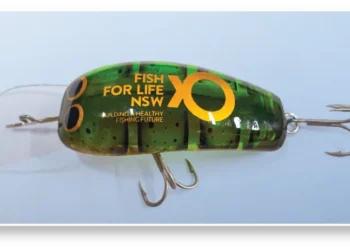
IN Environment News this month John Newbery discusses a new scientific paper that throws conventional thinking about minimum sizes for fish out the window.
AT last, after decades of so-called reviews of minimum sizes which have basically just fiddled at the edges, an Australian fisheries management authority has finally fundamentally questioned and analysed the use of minimum sizes as an effective tool for sustainable fish species management.
Our friends in WA have issued Fisheries Management Paper No. 279; Policy on the Application of Fish Size Limits in Western Australia. In eight concise pages it addresses one of the oldest types of management tools used in fisheries, the setting of minimum size limits for all popular species targeted by recreational and commercial fishers. It concludes that often setting these limits is a waste of time.
It defines an overarching principle: “A size limit should only be used where, after taking into consideration other management tools that are in place; it will clearly assist in providing sufficient egg production and enable adequate recruitment to a fish stock under normal environmental conditions.”
It concludes that “there is no sustainability benefit from a size limit if released fish have a low rate of post-release survival and are unlikely to contribute to the future spawning biomass.” And that “Minimum size limits are likely to be of little value for species where the majority of fish are released/discarded; especially where targeting or fishing pressure on a particular species is low.”
The Policy has then been used as the basis of the subsequent Fisheries Management Paper No. 280 which outlines proposals for reviewing the appropriateness of all current size limits that apply to finfish species in WA. The review takes a science-based approach which takes into account “total fishing mortality, which includes fish that are retained and fish that are discarded but subsequently die as a result of capture; the biological factors and reproductive strategies of finfish; as well as the social and economic objectives for the recreational and commercial fishing sectors.”
The review proposals, released for comments from all stakeholders, are remarkable for those of us brought up with the conventional wisdom that minimum size limits were essential. Consider this partial list of species for which it considers these minimum size limits are no longer warranted: yellowtail kingfish, amberjack, Samson fish, cobia, baldchin groper, breaksea cod, western blue groper, WA salmon, Spanish mackerel, spotted mackerel, mahi mahi, flounder, leatherjackets, sweetlips and sooty grunter.
For some other species, minimum size limits are proposed to be reduced overall, for example blue morwong and spangled emperor (41 down to 40cm) and for a couple, such as red emperor, reduced just for the rec sector (41 to 40). Yellowfin bream are reduced from 30 to 25, in line with all the other bream species.
Some stay the same, including barra, threadfin, coral trout, WA dhufish, GTs, tailor, skipjack trevally, flathead and fingermark. A couple go up: King George whiting from 28 to 30, and mulloway from 50 to 70, bringing them into line with black jewfish.
Whether the proposals are met with universal support doesn’t matter. What does is that they are innovative, science-based and clearly explained and justified.
















